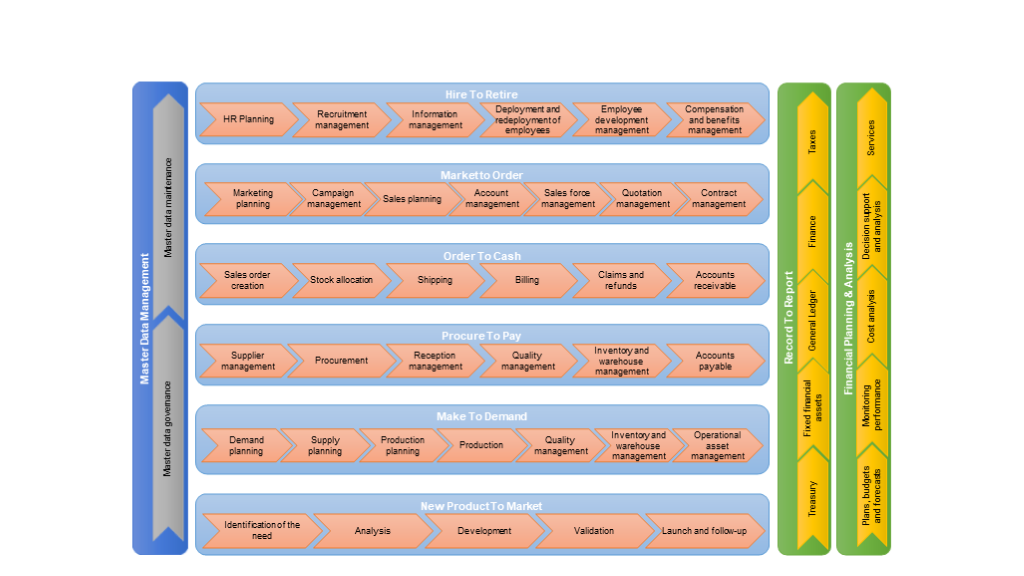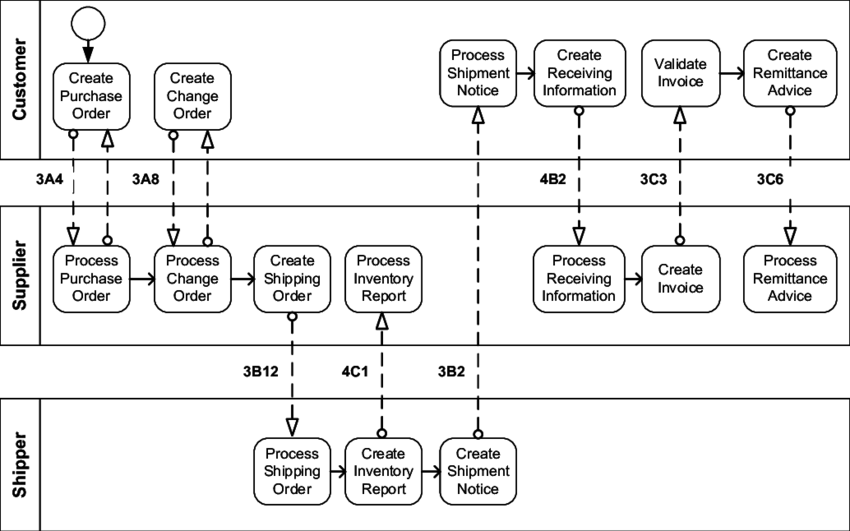The so-called end-to-end processes or value chains are well known in the ERP world, but they have proven to be a great tool to understand holistically how work is done in a company. That is why it is one of the most important issues in BPM and has become more relevant after the COVID pandemic because of its implication in the process digitization .
This way of representing the processes of the company allows to know how it works at an holistic level and helps to achieve the overall objectives of the company and not focus on specific aspects of any department. Knowing the way in which the company creates value, it is easier to understand the impact throughout the organization of any change in the way tasks are performed.
Value chains connect different functional processes, showing the global process in the company without taking into account aspects such as departmental boundaries, regions or any other silos that may exist due to the organization itself. Some characteristics that we can highlight of end-to-end processes are:
- They take into account the entire value chain
- Focus on customer value
- Classify the process taking into account the value to the organization
- Have an outside-in perspective
As benefits of working with end-to-end processes we can name:
- Holistic view: Departments and areas do not work alone but are interconnected. Working holistically helps the organization to focus on the end goal of the processes and their overall outcome and not just on the efficiency of individual components. It must be ensured that changes made to optimize one function do not negatively impact another area or process.
- Breaking silos: The company is no longer seen as departments with their isolated processes, but everyone is aware of the different actors with whom they interact. By knowing the interactions of the departments, they are made aware of the implications of decisions or the way in which their functions are performed, eliminating friction and blame.
- Customer focus: Since end-to-end processes are performed with an outside-in view, it implies that they have to be performed with a perspective from the customer’s point of view, thus improving their experience.
- Helping digitization: Knowing the full impact on the company when a change is made to a process is vital to avoid unpleasant surprises. On the other hand, many digital solutions span different functional areas and offer preconfigured processes. Seeing how they fit into the end-to-end process helps organizations to optimize their processes and automate them, improving cost, efficiency, and user experience, both internally and externally.
A map of the organization’s end-to-end processes and a breakdown of each of the steps into sub-processes is a great help in understanding how the company works.

Although depending on the sector and the company the end-to-end processes and their map change, some of the most common ones are:
Order to Cash (o Quote to Cash)
The process from acceptance of a customer order to collection of payment. Included are tasks such as order and credit management, order fulfillment, shipping, invoicing, accounts receivable, collection and financial accounting.
Procure to Pay (o Rec to Check)
It includes requirements, request for quotations, purchase orders and payment.
Market to Order
This process spans from concept to sales closure. It includes product development, promotion, pricing, distribution, and sales.

Record to Report
The process encompasses tasks such as gathering financial, strategic and operational information and delivering it to internal and external stakeholders to monitor the company’s performance.
Hire to Retire
A highly focused human resources process covering an employee’s career in an organization. It includes tasks such as recruitment, onboarding, training and development, performance management, compensation and benefits, and retirement.
Plan to Produce o Plan to Inventory
The sales forecasting process, production planning (if you manufacture your inventory) and inventory management in the case of Plan to Inventory.
Issue to Resolution
It is the problem management process encompassing problem detection, tracking, problem resolution, root cause analysis, improvement, and communication.
Acquire to Retire
Process for asset management, including requisition, acquisition, deployment, and retirement.
Idea to Offering (o Concept to product)
Process focused on product development covering from the idea to the launch of the offer.
These are just some of the processes that we can find, although, as we have mentioned, the names and scope of each of them may vary depending on the nature and sector of the company and the culture of the organization itself.
1 thought on “End-to-end processes”